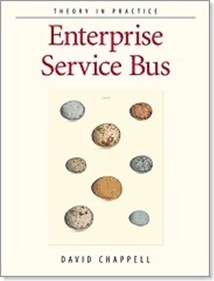 About a year ago, I was lucky enough to attend the Kaizenconf in Austin. When I joined the discussions on ESB Patterns, Dru Sellers and Chris Patterson (also known as the MassTransit guys) were talking about this book called Enterprise Service Bus from David Chappell. I finally took the time to read it and for the most part it was a real eye opener. As you might have guessed, the book provides an architectural overview of the ESB concept. Although it does provide some amount of detail, there are no in depth discussions on any particular technologies. But after reading the book it is quite clear that the author comes more from a Java background. However this is not that important for a book like this as these concepts are technology agnostic anyway.
About a year ago, I was lucky enough to attend the Kaizenconf in Austin. When I joined the discussions on ESB Patterns, Dru Sellers and Chris Patterson (also known as the MassTransit guys) were talking about this book called Enterprise Service Bus from David Chappell. I finally took the time to read it and for the most part it was a real eye opener. As you might have guessed, the book provides an architectural overview of the ESB concept. Although it does provide some amount of detail, there are no in depth discussions on any particular technologies. But after reading the book it is quite clear that the author comes more from a Java background. However this is not that important for a book like this as these concepts are technology agnostic anyway.
I must admit that getting through the first chapter, which tries to introduce the ESB, was not that easy. Too abstract and high level for my taste.
The second chapter is about the State of Integration and discusses how both business and technical drivers contributed to the ESB approach as opposed to Enterprise Application Integration (EAI). One of the best parts in the book is the discussion about “Accidental Architecture” which is an accurate and far too familiar description of the current architecture in most companies. Although the book is approximately 5 years old, it is still very relevant as the adoption rate of ESB’s is still not that common. But then again, I could be wrong about this :-).
The third chapter examines the key concepts of an ESB were the author tries to prove that these are born out of necessity, based on real requirements and problems that couldn’t be solved with typical EAI broker architectures (like Biztalk for example).
Chapter 4 states that XML is the exchange format of choice for passing data structures between applications and services. Nothing new here.
Chapter 5 till 8 provide in dept information about each of the key concepts described in chapter 4, like Message Oriented Middleware (MOM), Service Containers and Endpoints, Routing, Transformation, Messaging, etc. …
Chapter 9 goes back to the real world by exploring the most common form of integration that is practiced today: bulk data transfer using ETL and an endless amount of small batch applications. Sounds familiar? This chapter also provides the necessary steps in order to migrate away from latency and reliability issues towards a real-time integration and how this affects your business.
Chapter 10 is a bit more technology focused as it talks about Java Components in an ESB. However, this could equally be .NET or any other platform.
For me, chapter 11 is a real masterpiece especially the part on Portal Server Integration patterns like Forward Cache and Federated Query. Highly recommended reading.
The final chapter discusses the WS-DeathStar (WS-*) specifications and what they could mean for an ESB.
In the end, I have a lot to think about after reading this book. It challenged a lot of my earlier assumptions on distributed computing and it certainly helped me understand a couple of things while I was exploring NServiceBus.
Till next time
One thought on “Book Review: Enterprise Service Bus”
Comments are closed.